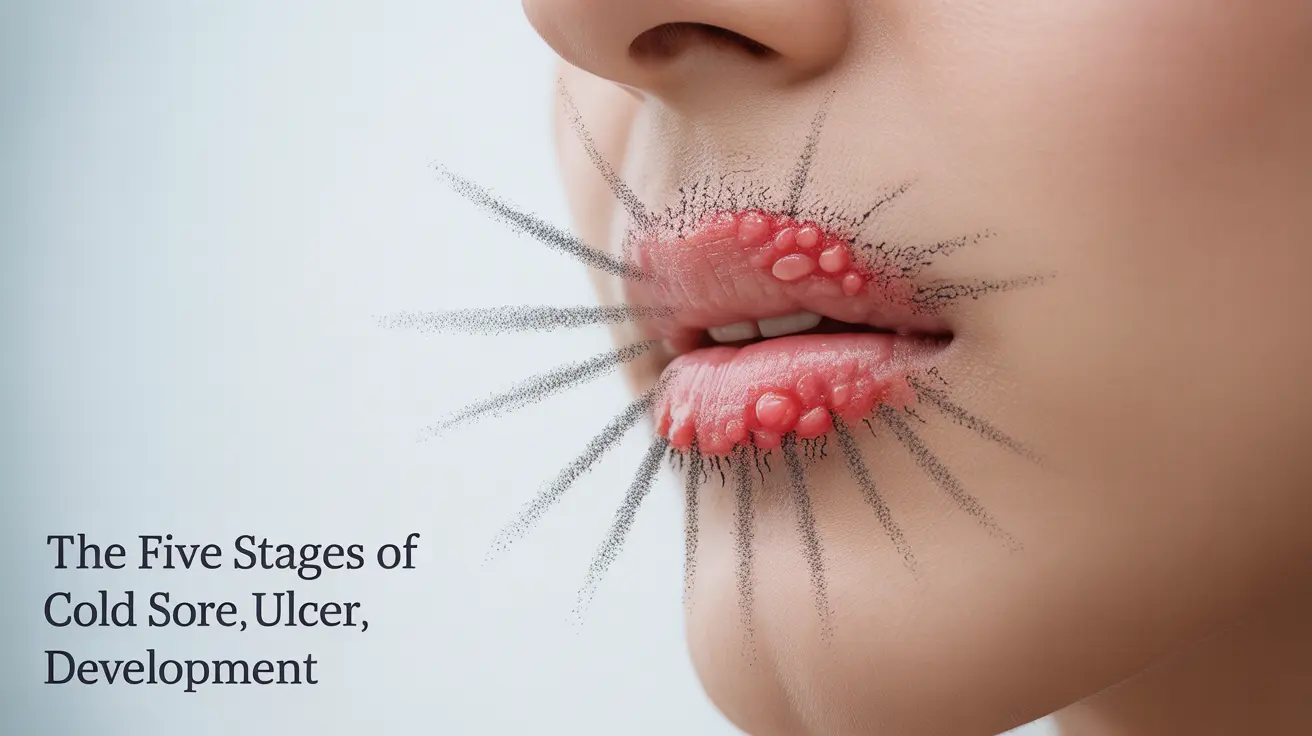Cold sores, caused by the herpes simplex virus (HSV-1), progress through distinct stages as they develop and heal. Understanding these stages can help you recognize symptoms early and take appropriate action to manage outbreaks effectively. This comprehensive guide will walk you through each stage of a cold sore, including symptoms, duration, and treatment options.
The Five Stages of Cold Sore Development
Stage 1: Tingling Phase (Day 1-2)
The first sign of an impending cold sore is typically a tingling, itching, or burning sensation around the lips. This initial stage, known as the prodrome phase, is crucial for early intervention. The affected area may also feel slightly tender or sensitive to touch, though no visible symptoms appear yet.
Stage 2: Blistering Phase (Day 2-4)
During this stage, small fluid-filled blisters begin to form, clustering together in the affected area. The skin becomes increasingly red and swollen. These blisters contain high concentrations of the virus, making this stage particularly contagious.
Stage 3: Weeping Phase (Day 4-5)
The blisters eventually burst, releasing clear fluid and creating shallow, painful sores. This stage is often the most uncomfortable and remains highly contagious. The exposed sores may ooze fluid and can be sensitive to touch or movement.
Stage 4: Crusting Phase (Day 5-8)
As healing begins, the sores dry out and form a yellowish or brownish crust. While this indicates the healing process is underway, the scab can crack or break, potentially causing discomfort and delayed healing.
Stage 5: Healing Phase (Day 8-10)
The final stage involves the scab falling off naturally, revealing new skin underneath. Some residual redness may persist but will gradually fade. Complete healing typically occurs within 10-14 days from the initial symptoms.
Treatment Approaches for Different Stages
Early Intervention
The most effective treatment begins during the tingling stage. Antiviral medications like docosanol or acyclovir can help reduce the severity and duration of the outbreak if started promptly. These medications work by preventing the virus from replicating effectively.
Managing Active Outbreaks
During the blistering and weeping phases, keeping the area clean and applying cold compresses can help reduce discomfort. Over-the-counter pain relievers may also help manage pain and inflammation. Avoid touching or picking at the sores to prevent bacterial infection and spreading the virus.
Prevention and Trigger Management
Common triggers for cold sore outbreaks include:
- Stress and fatigue
- Sun exposure
- Hormonal changes
- Weakened immune system
- Physical trauma to the lip area
To minimize outbreaks, maintain good overall health, use UV protection on your lips, manage stress levels, and avoid sharing personal items that may contact your mouth.
Frequently Asked Questions
What are the five stages of a cold sore and what symptoms should I expect at each stage?
The five stages are: tingling (burning and itching), blistering (fluid-filled sores form), weeping (blisters burst), crusting (yellow/brown scab forms), and healing (scab falls off). Each stage has distinct characteristics and varying levels of discomfort.
How long does each stage of a cold sore typically last and when does healing usually occur?
Each stage typically lasts 1-3 days, with complete healing occurring within 10-14 days. The tingling stage lasts 1-2 days, blistering 2-3 days, weeping 1-2 days, crusting 2-3 days, and final healing 2-3 days.
What early treatments are most effective during the tingling stage to shorten a cold sore outbreak?
Antiviral medications like docosanol or acyclovir are most effective when started during the tingling stage. These treatments can reduce healing time and outbreak severity when applied at the first sign of symptoms.
How contagious are cold sores at each stage, especially during blistering and weeping phases?
Cold sores are most contagious during the blistering and weeping phases when fluid is present. However, they can be contagious at any stage, even before visible symptoms appear. Direct contact should be avoided until complete healing occurs.
What common triggers cause cold sore outbreaks and how can I prevent them?
Common triggers include stress, sun exposure, illness, hormonal changes, and lip injury. Prevention involves managing these triggers through stress reduction, using UV protection, maintaining good health, and avoiding sharing personal items that contact the mouth.




